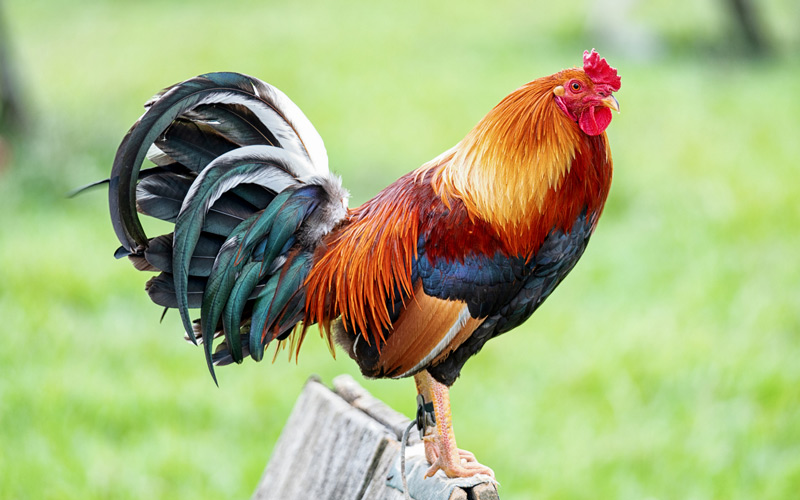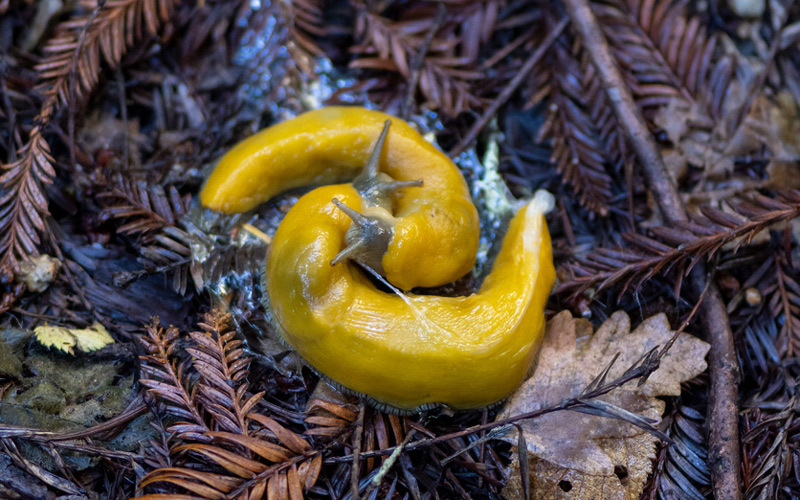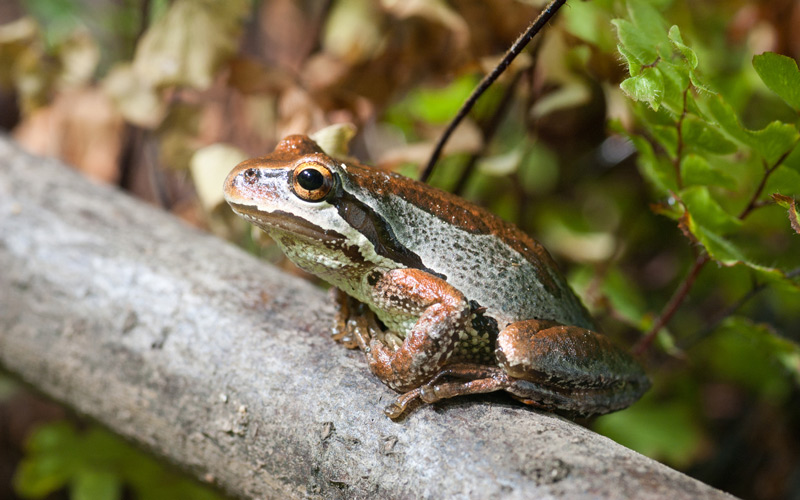The Unusual Mating Rituals of Marin County Fauna

By Matt Dolkas,
Senior Manager, Marketing
February 13, 2025
Valentine’s Day is a bit silly if you really think about it. (I can feel my wife rolling her eyes at me already.) What better way to show your love than with decomposing flowers and food that will rot your teeth? Love ya, hun.
I mean, I get it — there’s something irresistible about gifting something sweet (or some local flavor) to those you love and taking the time to write a short note of affection. I’m personally looking forward to agonizing over this year’s cards and making the day extra special. Tis’ the season.
And what gives me an additional sense of satisfaction is knowing that we’re not the only ones with these elaborate rituals. There are ample examples of local wildlife here in Marin County (including those with habitat on our wonderful agricultural lands) that also have strange seasonal love habits.
Turns out, we’re not alone:

Tarantula Hawk Incubators
With its striking metallic blue-black body and vibrant orange wings, the tarantula hawk is one of Marin County’s most formidable flying insects. In the mating season, males perch atop tall plants waiting for passing females before performing elaborate aerial displays with intricate flight patterns and intense bursts of wing buzzing. It’s like the Saturday Night Fever of the insect world.
You’re gonna want to sit down for this next part.
After mating, a female tarantula hawk begins her solitary journey to locate a suitable host for her offspring, typically a tarantula. Yes, I said “host.” Once found, she paralyzes the spider with her potent venom and lays a single egg on its body. The immobilized tarantula then serves as a living incubator for the wasp larva which later hatches to consumes the still-living spider.
Rattlesnake’s Combat Dancing
In West Marin’s tens of thousands of acres of farms and ranches, including those permanently protected by MALT, rattlesnakes are common. Rattlesnake combat dancing I think is one of the most fascinating and arguably most mesmerizing displays of male dominance and territoriality. The ritual occurs when two male snakes encounter one another in overlapping territories and the combat begins with both snakes raising their heads and bodies off the ground—a better view to size up the other guy.
Standing tall, swaying side to side, bending backward and occasionally striking one another seems to be more about communicating who’s boss than actually fighting. Intertwined and simultaneously rattling their tails creates a hypnotic buzzing, adding to the spectacle and warning other potential adversaries. The victor is typically the snake that manages to assert dominance by pinning its opponent to the ground.

Roosters Strut
For this next mating ritual, we are shifting from wildlife to farm life. What might seem like the routine strut of a rooster is actually part of a chicken’s complex wooing ritual. These feathered Casanovas begin their age-old courtship by prancing around the coop and cooing softly (much quieter than their morning crows). A wing-dragging dance soon follows, with one wing lowered and dragging to show his strength and vibrant feathers.
But like any experienced bachelor would know, you can’t show up to the date empty-handed. A hen looks for a rooster who is not only a strapping specimen but also one who shows he can provide. Roosters will often bring a juicy bug or worm to help seal the deal— it’s dinner and a show.

Banana Slugs’ Cannibalistic Copulation
Sliding across the forest floor, banana slugs lay a mucus-laden slime trail of potent reproductive pheromones, signaling their readiness to copulate. Upon a chance encounter, the two hermaphroditic gastropods begin an awkward dance, lunging and biting one another with the occasional smack of the tail. But then things really get weird.
After several hours (!) taking turns swapping sperm, both slugs withdraw to go their seperate ways. However, their exceptionally large genetalia (comparatively the largest on the planet) occasionally makes it difficult to part ways. And in an act of desperation, one slug may begin chewing at the other member’s penis in one of the most devastaing quid pro quos in the animal kingdom. If you can stomach it, get the full story here.

Screaming Frogs
It’s that time of year again. With the land renewed from winter rains, frogs (some of which are endangered) emerge from their hibernation to serenade their beloved around the creeks and agricultural stock ponds across West Marin. (These ponds are a great example of how ranching and wildlife coexist.) The males congregate around the water’s edge, their throats swelling with anticipation as they unleash a symphony of chirps and thrills, each striving to belt it louder than the other guy.
Of course this performance is as much about attracting a female as it is about a show of dominance. It is a competition of vocal prowess, where only the most melodious suitor will win the heart of his mate. Enjoy the chorus on your next visit to our local open spaces and the working landscape of West Marin.
Since its founding in 1980, the Marin Agricultural Land Trust (MALT) has been working with local landowners to acquire voluntary agricultural conservation easements. These easements protect the land’s conservation values while also requiring that it remains in agricultural production. To date, MALT has secured 98 easements totaling more than 58,000 acres of farm and ranchland.
This working landscape also plays a pivotal role in sustain our precious biodiversity. Through this land’s careful stewardship, we can ensure the highest number of habitats are sustained and help cultivate the conditions needed for flora and fauna to thrive. Discover more here.